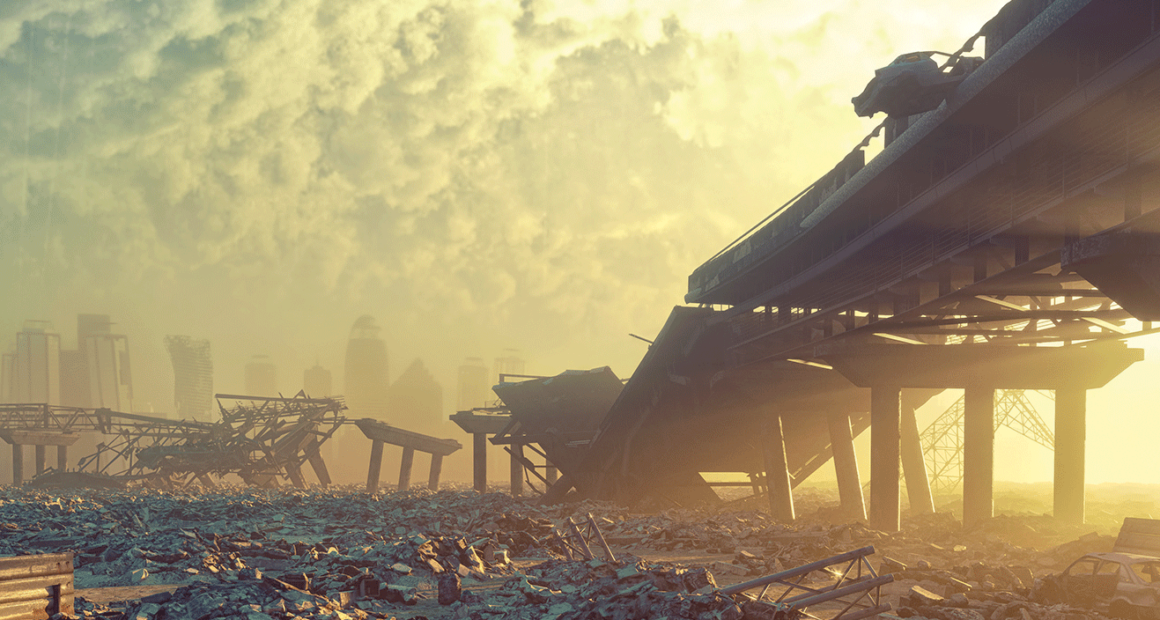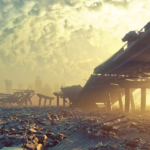A Doomsday Quiz

The world has officially gone to hell—whether it’s zombies, climate catastrophe, nuclear war, artificial intelligence, robots, or just late-stage capitalism finally collapsing in on itself. But guess what? Journalism never dies. The people need information more than ever, and it’s your duty to get out there and tell the story.
Are you the fearless field reporter dodging zombies for a headline? Or the brave broadcaster keeping petrified civilization informed? Take this quiz to find out what kind of apocalypse journalist you are!
1. The apocalypse has begun. What’s your first instinct?
a. Grab my recorder and immediately start documenting everything. The people need to know!
b. Find a radio or working television studio to get the news out there.
c. Track down survivors and start collecting their stories. History is lived experiences.
d. Secure a safe place, then start brainstorming names for my apocalypse-themed blog.
2. You come across an abandoned news station. What’s your next move?
a. Raid the archives—I need to know who saw this coming and ignored it.
b. Hijack the airwaves and start broadcasting to other cities and provinces.
c. Set up a community message board so survivors can share info and find you.
d. Scavenge for supplies first, then start drafting an essay about ethics in the apocalypse.
3. How would you handle a close call with a zombie?
a. Whack them with my recorder, notepad, camera—anything I have on me—and then write down what I remember.
b. Shout real-time instructions into a radio so others know how to avoid the same fate.
c. Hide in a bush and then take detailed notes on how they move and behave.
d. Outrun it, then write a gripping blog post about the experience, overplaying the details just a little bit.
4. Who are your go-to sources?
a. Old records in abandoned government buildings, like a journalist with some stellar data literacy.
b. Other emergency broadcasts and radio reports—all things audio.
c. Talking to survivors over what’s left of their kitchen tables, hearing their stories, and recording oral histories.
d. Hacking into whatever’s left of the internet and social media and piecing together the truth.
5. What headline would you publish?
a. Inside the Collapse: Who Knew, Who Lied, and Who Profited?
b. Emergency Broadcast: How to Stay Alive in This New World
c. Survivors Speak: Life after the Fall of Civilization
d. The World Ended, Now What?
Your Apocalypse Journalist Persona Is…
Mostly A’s – The Crossbow-Wielding Field Reporter

You’re dodging danger to get the real story. You’re fearless, stubborn, and willing to break into government buildings and bunkers if it means exposing the truth. Eating and sleeping is secondary to reporting.
Mostly B’s – The Brave Emergency Broadcaster

As society crumbles, you put on a brave face, night after night. No matter how dire the situation becomes, you remain committed to broadcasting live updates over the radio or television. People trust you, so try not to get eaten.
Mostly C’s – The Fearless Magazine Feature Writer

Even amongst the chaos, there’s beauty worthy of your deeply pondered words. You capture the human experience of the apocalypse with a mix of warmth, wit, and insight, offering a beacon of hope and deeper understanding in a time dominated by quick reporter hits.
Mostly D’s – The Last Blogger on Earth

Some might call it selfish, but you’re giving a deeply personal POV of what’s happening IRL. Your commentary and opinions on the everyday life of survival are the relatable, witty content people want and need.
About the author
Soraya El-houni
Soraya is a second-year Master of Journalism student at Toronto Metropolitan University. She has written for Toronto Life, SEASON Zine and Darby Magazine. She is interested in long-form writing, sports, culture, and social justice.





